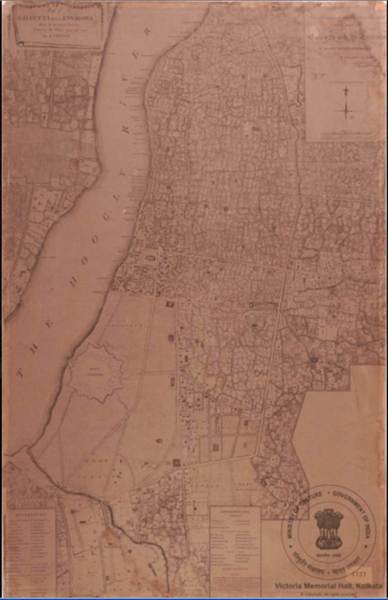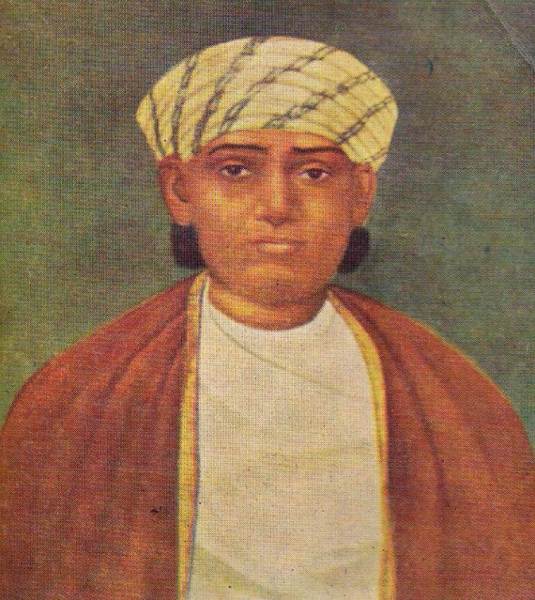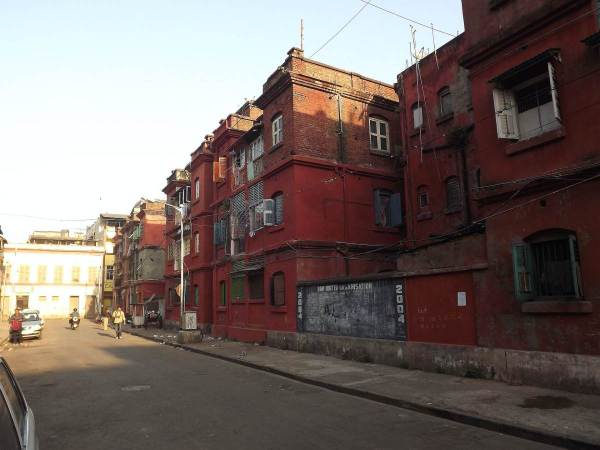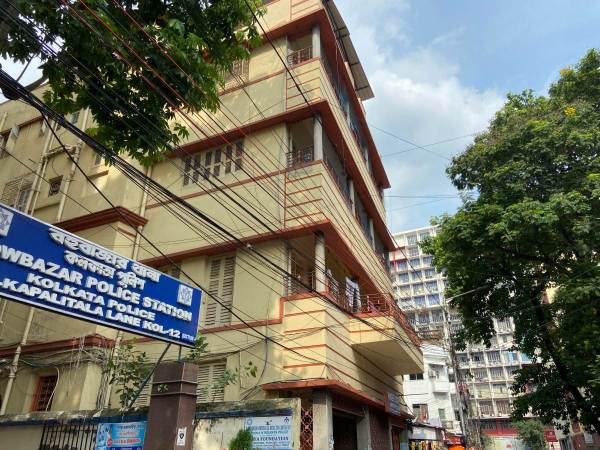Few refer to the long stretch of road in central Kolkata that starts in the neighbourhood of Lalbazar and runs all the way down to Sealdah as Bepin Behari Ganguly Street. For Calcuttans, this vital road and its branching bylanes have always been the area of Bowbazar.
Old archives and maps of the city provide some fascinating insight into the neighbourhood and history, particularly an entry in the August edition of the Calcutta Municipal Gazette of 1978. It appears that this neighbourhood, including the road itself now named Bepin Behari Ganguly Street, has undergone several name changes over the years.
It appears that this neighbourhood, including the road itself now named Bepin Behari Ganguly Street, has undergone several name changes over the years. (Express Photo: Neha Banka)
According to the Calcutta Municipal Gazette, one of the earliest references to Bowbazar can be found in a document by the East India Company from 1749 that refers to this road as the Great Bungalow Road, while A. Upjohn’s Map of Calcutta marks this road as Baithakkhana Street, Bowbazar, perhaps including it as part of the extended Baithakkhana neighbourhood.
 Old archives and maps of the city provide some fascinating insight into the neighbourhood and history, particularly an entry in the August edition of the Calcutta Municipal Gazette of 1978.
Old archives and maps of the city provide some fascinating insight into the neighbourhood and history, particularly an entry in the August edition of the Calcutta Municipal Gazette of 1978.
“It was then a narrow, dusty road flanked with green shrubs, occasional paddy fields and mud huts. The great fire of 1740 (?1790) completely gutted 700 of such straw thatched houses. The road was broadened in 1799 and the exact year when it was tarred is not precisely known,” says the entry in the Calcutta Municipal Gazette.
Subscriber Only Stories
Archives of the city indicate that the neighbourhood of Bowbazar may predate the arrival of Job Charnock in 1655-1656, meaning that the neighbourhood may be older than the date that some historians consider to be the “founding” of the city of Calcutta. The Gazette says that this area was referred to as ‘Bohubazar’, long before Charnock first arrived here and the word ‘Bow’ may be a mispronunciation of the Bengali term bohu or bou for “wife”, because of the inability of the British to accurately pronounce the word.
 Every year, during Christmas and New Year’s Eve, this neighbourhood becomes a focal point for celebrations for the community. (Express Photo: Neha Banka)
Every year, during Christmas and New Year’s Eve, this neighbourhood becomes a focal point for celebrations for the community. (Express Photo: Neha Banka)
Another theory behind how Bowbazar got its name, also more popular with bloggers and tour guides, is that Motilal Seal, a wealthy Bengali businessman with diversified interests and investments, bequeathed a bazaar to his daughter-in-law, or his son’s bou.
 Motilal Seal. (Photo: Chandra Nath Mullick at English Wikipedia)
Motilal Seal. (Photo: Chandra Nath Mullick at English Wikipedia)
Seal was a philanthropist who donated large sums of money to various charitable causes and for education. “But there were at least three large bazars in the area and there can be no argument about that,” says the entry in the Calcutta Municipal Gazette.
Advertisement
There was not enough information available to verify this detail at the time of publishing this report, but historians believe that Motilal Seal was deeply influenced by Raja Rammohan Roy and his reforms, and supported various sub-causes championing the emancipation of women, including widow remarriage. Hence, it may not be very unlikely that Seal was open to handing over the ownership of land or property to his daughter-in-law in her individual right.
As it covers a large expanse of land in the heart of the city, Bowbazar is really a macrocosm of several smaller neighbourhoods and several para within it, each of which has its own unique history and story behind how it developed, in part because of the diversity of its residents and the communities that called it home. Among the most well-known is Bow Barracks, a row of red brick houses where many Anglo-Indian and Indian-Chinese families have lived for generations.
 Bow Barracks is a row of red brick houses where many Anglo-Indian and Indian-Chinese families have lived for generations. (Photo: Sumit Surai/Wikipedia)
Bow Barracks is a row of red brick houses where many Anglo-Indian and Indian-Chinese families have lived for generations. (Photo: Sumit Surai/Wikipedia)
According to some historians, Bow Barracks was originally built as a garrison’s mess during the First World War, which was later converted into apartment-style homes by the Anglo-Indians who took ownership of these flats after the war years. Every year, during Christmas and New Year’s Eve, this neighbourhood becomes a focal point for celebrations for the community.
Advertisement
The neighbourhood is one of the last remaining sections of the city where tropical colonial architecture is still visible, some preserved and some decrepit, although like much of Kolkata, this is rapidly changing.
 Archives of the city indicate that the neighbourhood of Bowbazar may predate the arrival of Job Charnock in 1655-1656. (Express Photo: Neha Banka)
Archives of the city indicate that the neighbourhood of Bowbazar may predate the arrival of Job Charnock in 1655-1656. (Express Photo: Neha Banka)
In his book A History of Calcutta’s Streets, historian P Thankappan Nair, who has extensively documented Kolkata’s urban history, writes that the decision to change the name of Bow Bazar Street to Bepin Behari Ganguly Street came about during a meeting of the Calcutta Municipal Corporation in June 1957, because “the popular demand for renaming the street” after one of Bengal’s most iconic revolutionary leaders “was strong”.
Ganguly was also the founder member of Atmonnati Samiti, an underground revolutionary society and a fraction of the Jugantar group based in Calcutta. Ganguly was also instrumental in the planning and execution of several armed robberies and anti-British protests, which resulted in several arrests and imprisonment.
 Bepin Behari Ganguly. (Photo: P.K.Niyogi/Wikipedia)
Bepin Behari Ganguly. (Photo: P.K.Niyogi/Wikipedia)
Three years after his death in January 1954, Bow Bazar Street was renamed Bepin Behari Ganguly Street in his honour, along with a statue erected of the revolutionary.
Source: https://indianexpress.com/article/cities/kolkata/streetwise-kolkata-bowbazar-calcutta-8112009/

